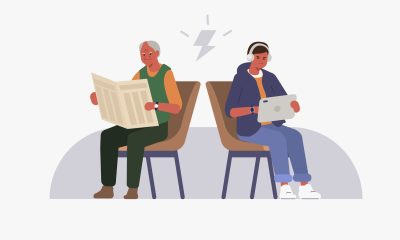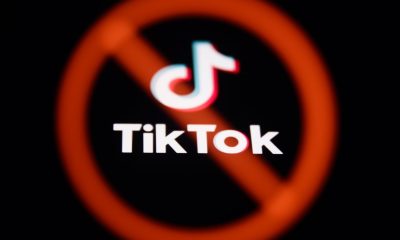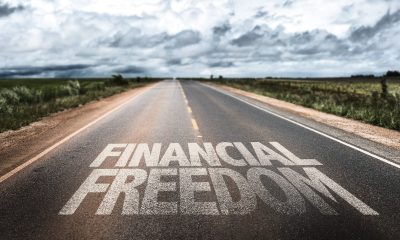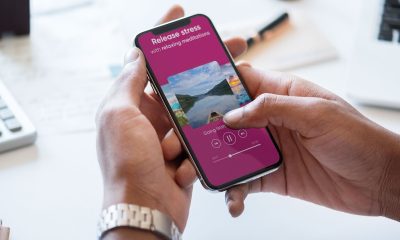Personal Finance
Here’s how to lower your monthly student loan payments

Interest has begun to accrue on federal student loans again and many borrowers will face their first student loan payment since March 2020 in October. But under President Joe Biden, the Department of Education is running a series of programs and updates designed to reduce student loan payments to as low as zero or wipe out entire balances for some borrowers.
Here are some ways borrowers can seek federal student loan relief.
Apply for SAVE
The Saving on A Valuable Education (SAVE) plan is an income-driven repayment plan (IDR) that sets monthly payments based on a borrower’s income and family size, while ignoring the loan balance. Remaining federal student loan balances could be forgiven after a certain number of years, according to the White House.
Borrowers who are enrolled in SAVE and make less than about $15 an hour won’t need to make any payments, and those earning above that threshold would save more than $1,000 a year on their payments compared to other IDR plans.
Monthly payments under the SAVE plan are calculated based on discretionary income— the difference between adjusted gross income (AGI) and a percentage of the federal poverty line. Under new rules, that percentage was raised from 150% to 225%, according to StudentAid.Gov.
Based on changes to income exceptions, single borrowers earning $32,800 or less or a family of four earning $67,500 or less (amounts are higher in Alaska and Hawaii) would not owe loan payments, StudentAid.Gov reported. Borrowers with incomes above these limits would save at least $1,000 annually compared to other IDR plans.
The SAVE Plan also ensures that borrowers’ balances don’t grow due to unpaid interest as long as they keep making regular payments. For example, if $50 in interest accumulates for a borrower with a $30 monthly payment, the remaining $20 would not be charged.
Additionally, the Education Department is rolling out a 12-month “on-ramp” repayment program that extends from Oct. 1 to Sep. 30, 2024.
“Financially vulnerable borrowers who miss monthly payments during this period are not considered delinquent, reported to credit bureaus, placed in default or referred to debt collection agencies,” the White House said in a statement.
Additional benefits of SAVE are set to go into effect in July 2024. Here are some highlights.
- Borrowers with undergraduate and graduate loans would owe monthly payments based on a weighted average between 5% and 10% of their income based on the original principal balances of their loans
- Borrowers with original principal balances of $12,000 or less will receive forgiveness of remaining balances after ten years of payments. This period rises by one year for every additional $1,000
- Those who are at least 75 days late in payments would be automatically enrolled into an IDR plan if they agree to allow the Department of Education to access their tax information
The Biden administration announced the SAVE plan after the Supreme Court shut down its widespread student loan forgiveness plan. However, the administration is currently seeking widespread student loan relief through the Higher Education Act (HEA).
If you hold private student loans, you won’t be enrolled in a federal income-driven repayment plan, but you could refinance your loans to a lower rate. Visit Credible to compare options from different lenders without affecting your credit score.
AMERICANS CONSIDER USING CREDIT CARDS TO AFFORD STUDENT LOAN PAYMENTS: SURVEY
Apply to an income-driven repayment plan (IDR)
SAVE is one of a few income-driven repayment (IRD) plans available through StudentAid.gov. Payments under these plans are generally calculated based on a percentage of discretionary income. And payment terms range from 20 to 25 years, with forgiveness being granted afterward in some cases.
Recently, the Biden administration made a one-time adjustment to IDR plans, which wiped out $39 billion in student loan debt for 800,000 borrowers. These changes were designed to credit certain payments toward forgiveness.
“Inaccurate payment counts have resulted in borrowers losing hard-earned progress toward loan forgiveness,” the Department of Education said.
Through this one-time update to IDR plans, payments would be credited during any of the following periods.
- Any month when a borrower was in repayment status, regardless of the payments made, the type of loan, or the repayment plan
- Any period in which a borrower spent 12 or more consecutive months in forbearance or 36 or more months in cumulative forbearance
- Any month in deferment (except for in-school deferment) prior to 2013
- Any month under economic hardship or military deferments on or after January 1, 2013
The Education Department argued these changes were necessary to fix issues in the system.
“For far too long, borrowers fell through the cracks of a broken system that failed to keep accurate track of their progress towards forgiveness,” Secretary of Education Miguel Cardona said in a statement. “By fixing past administrative failures, we are ensuring everyone gets the forgiveness they deserve, just as we have done for public servants, students who were cheated by their colleges and borrowers with permanent disabilities, including veterans. This administration will not stop fighting to level the playing field in higher education.”
In August a group of think tanks sued the Biden administration over IDR plans. But a federal judge dismissed that lawsuit.
If you have private student loans, you won’t benefit from SAVE or other government IDR initiatives. You could consider reducing your monthly payments by refinancing your loans for a lower rate. Visit Credible to get your personalized rate in minutes.
HERE’S HOW TO SIGN UP FOR BIDEN’S NEW STUDENT LOAN REPAYMENT PLAN SAVE
Apply for Public Service Loan Forgiveness (PSLF)
The Public Service Loan Forgiveness (PSLF) plan is designed to forgive student loan debt for employees who work for government or non-profit agencies after they make at least 120 monthly payments – about 10 years.
Borrowers can apply online. Here are the qualifications for PSLF.
- Borrowers must be employed full-time by a U.S. federal, state, local, or tribal government organization including the U.S. military or qualifying not-for-profit agency
- Have Direct Loans (or have consolidated other federal student loans into a Direct Loan)
- Repay loans under an IDR plan or a 10-year standard repayment plan; and
- Make a total of 120 qualifying consecutive payments
Recent changes to the PSLF program have resulted in $45 billion in student loan debt forgiven for 653,800 public servants, according to the Education Department.
“By fixing past administrative failures, we are ensuring everyone gets the forgiveness they deserve, just as we have done for public servants, students who were cheated by their colleges, and borrowers with permanent disabilities, including veterans,” Cardona said in a statement.
If you have private student loans, you could consider lowering your monthly payments by refinancing your loans to a lower rate. Visit Credible to speak with a student loan expert and get your questions answered.
THESE STATES WILL GET A BIGGER SLICE OF BIDEN’S $39 BILLION STUDENT LOAN FORGIVENESS PIE
Have a finance-related question, but don’t know who to ask? Email The Credible Money Expert at moneyexpert@credible.com and your question might be answered by Credible in our Money Expert column.
Read the full article here

-

 Side Hustles3 days ago
Side Hustles3 days agoWhy the Best CEOs Think Like Anthropologists
-

 Side Hustles6 days ago
Side Hustles6 days agoLA Rental Prices Skyrocketing Despite Price Gouging Laws
-

 Make Money4 days ago
Make Money4 days agoEarn More in 2025: Top 10 High-Yield Savings Accounts Revealed
-

 Side Hustles6 days ago
Side Hustles6 days agoHow to Craft Marketing Campaigns That Reach Multiple Generations
-

 Side Hustles4 days ago
Side Hustles4 days agoWhat to Do If TikTok is Banned — How to Protect Your Brand
-

 Passive Income4 days ago
Passive Income4 days agoHow Pets Can Promote Better Health and Well-Being in the Workplace
-

 Make Money5 days ago
Make Money5 days agoBuild Your Future: 5 Simple Steps to Financial Stability
-

 Side Hustles4 days ago
Side Hustles4 days ago10 Roles That Are Surprisingly Well-Suited for Outsourcing


















